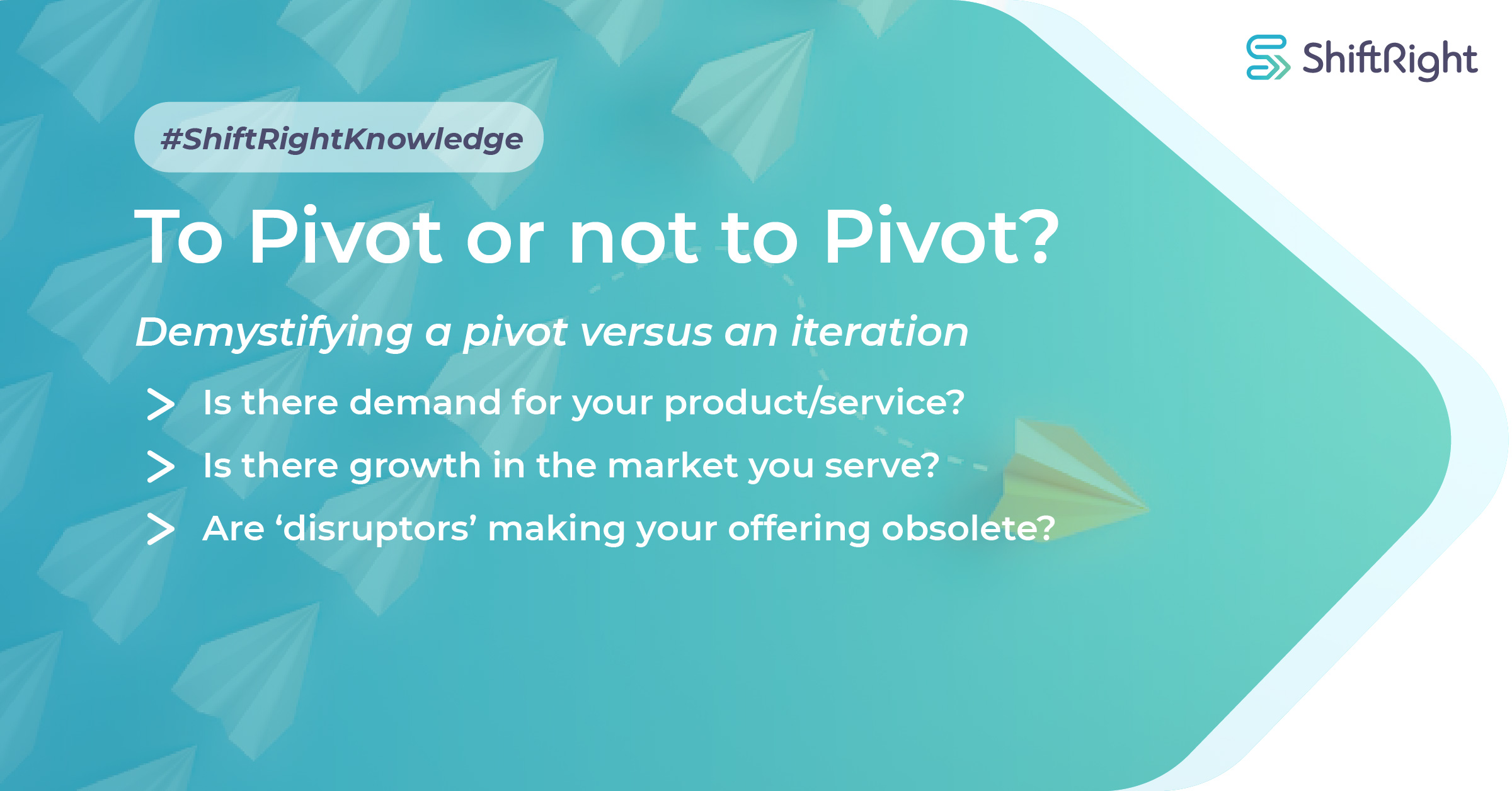We have all been hearing about the importance of ‘pivoting’ in response to the current pandemic. Business executives and gurus have been singing the praises of organizations that have managed to quickly and successfully revamp their operating models to create innovative new product or service offerings.
But how do we know when it really is time to pivot in response to our market?
In order to answer that question, it is important to make a distinction between an iteration versus a pivot. What’s the difference you may ask?
An iteration is a minor adjustment. You reorient your business model and processes but your new model still closely mirrors your base core idea. Your product and/or service offering is not radically different, it is just more aligned to your market and customer requirements.
By contrast a pivot, requires a more significant shift in direction. A pivot happens when you make a substantive change to your business strategy, customer focus and product / service offering.
A pivot can a occur in the following situations:
- There is no demand for the product / service you are offering
- Your product or service does not resonate with your target market
- There is not enough growth in the market you are servicing
- New technologies and/or other ‘disruptors’ are making your offering obsolete
- You have entered the market too early and need to create the baseline education and behaviours to drive customer adoption
- Political, social or economic forces are forcing you to consider alternative ways to offer your product and or service
When considering the need to pivot ensure you are clear on your intent and recognize the difference between a true pivot versus a strategic iteration.
Have you had to pivot or iterate your business model or product / service offering in some way?


1 thought on “To Pivot or not to Pivot? Demystifying a pivot versus an iteration”
Really informative article. Much thanks again. Fantastic.